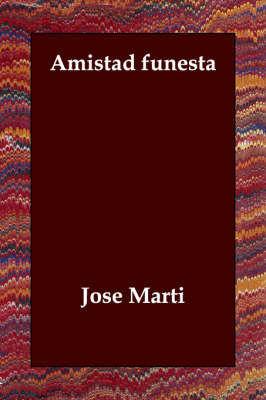3.8.6 Amistad Fatesta or Lucía Jerez, the only novel written by José Martí (1885)

In 1885, at the request of a friend, Adelaida Baralt, José Martí wrote what would be his only novel: Amistad Funesta o Lucía Jerez, which was published under the pseudonym Adelaida Ral and appeared in several issues of the newspaper “El Latino Americano.”
Written while the master was going through a critical period in his life: he was estranged from the revolutionary process due to disagreements with the military leaders of the Ten Years’ War, Máximo Gómez and Antonio Maceo; it is considered by some scholars to be the first modernist novel in the Americas.
Set at the end of the 19th century, Lucía Jerez is a love novel with a tragic ending, set against the backdrop of the economic, political, and social situation facing the American continent at that time. With beautiful language and a sophisticated style, Martí incorporates a wealth of his personal experiences into the plot. Without explicit reference to the location of the action, several literary critics and scholars of Martí’s work maintain that it takes place in a country well known to him, possibly between Mexico, Guatemala, and Cuba.
A characteristic of this novel is the author’s extensive descriptions and detours, which lengthen the dramatic action but also allow us to understand his personal views on human behavior, the arts, education, society, and politics. Color appears in the novel as a “melodic line that inspires and exalts, and repeats serenely in a harmonious symphony…” But blue stands out among all the others as a symbol of hope, of passionate, absorbing, and contradictory love, just as white symbolizes deep and pure love that uplifts the spirit.
As Gonzalo de Quesada, a personal friend and literary executor of the Maestro, wrote in the introduction to his 1911 edition of this work: “This work, elevated in thought, elegant in style, with lessons, like everything he did, for his compatriots, was paid for at a pittance per word; with something of his own existence.”
Referring to José Martí’s foray into this literary genre, he stated: “I don’t know if the Master, on other occasions, cultivated this literary branch; but his translation of Called Back by Hugh Conway, for which a publishing house granted him, as a great generosity, one hundred pesos, later with a brilliant costume and the name Misterio sold by the thousands, and his version, which so seems an original, loving and admirable, of Ramona by Hellen Hunt Jackson, sought in vain in bookstores, are clear proof that, had he had the opportunity and the time to do so, he would have also triumphed in the Novel. He lacked no elements due to his knowledge of the reality of the world and its passions, longings, and tortures; he had plenty of imagination to make it stand out; splendid language with which to express it.”








